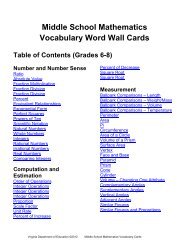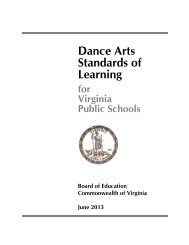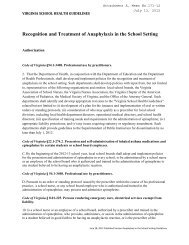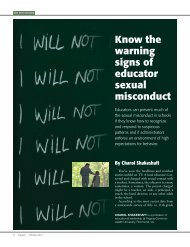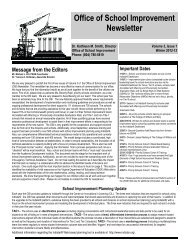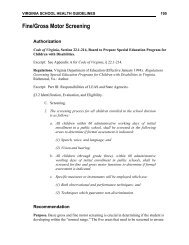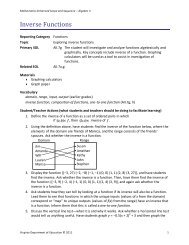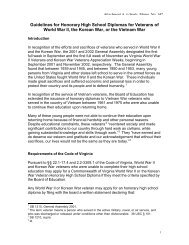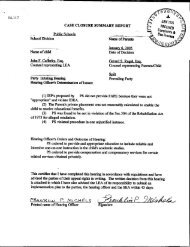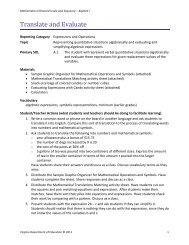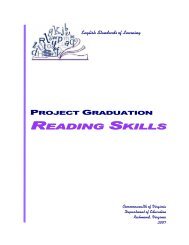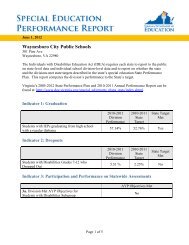What Makes Something Alive - Virginia Department of Education
What Makes Something Alive - Virginia Department of Education
What Makes Something Alive - Virginia Department of Education
You also want an ePaper? Increase the reach of your titles
YUMPU automatically turns print PDFs into web optimized ePapers that Google loves.
Topic 1: Session 1.3 – Real or Imaginary?<br />
Session Supplies:<br />
• „Characteristics <strong>of</strong> Living Organisms” web that was created for Topic 1, Session 1.2<br />
• Project WILD, pg. 180: “And the Wolf Wore Shoes” (procedure steps 1-5 only)<br />
• Fiction vs. Nonfiction T-table sheet (pg. 10)<br />
• OPTIONAL: Fiction vs. Nonfiction Venn Diagram student sheet (pg. 11)<br />
• At least one nonfiction book about animals and at least one fiction book about animals (a<br />
good source for these books would be your school library)<br />
• One <strong>of</strong> the fiction books about animals selected to read aloud to class<br />
Session <strong>Virginia</strong> SOL<br />
Science English Mathematics History & Social Science<br />
2.1 a, b, c, d 2.1 c, d<br />
2.2 a, b, c, e<br />
2.3 a, b, c, d<br />
2.8 c, e<br />
2.9<br />
Session 1.3 – Real or Imaginary?<br />
Teacher Questions & Notes<br />
-If we want more information about<br />
living organisms, what types <strong>of</strong> books<br />
would we use? (Direct the students<br />
toward nonfiction text.)<br />
-<strong>What</strong> do you notice about these<br />
books?<br />
Procedures<br />
1. Refer to the “Characteristics <strong>of</strong> Living Organisms” that was<br />
created in the previous session.<br />
2. In Project WILD, pg. 180, complete the activity “And the Wolf<br />
Wore Shoes” steps 1-5 only.<br />
3. Have the groups examine one fiction and one nonfiction book.<br />
Have students use the Fiction vs. Nonfiction T-table sheet (pg. 10)<br />
and put it in their journal or have them draw a T-table in their<br />
journal and title it “Fiction vs. Nonfiction.” On the T-table, list<br />
the characteristics <strong>of</strong> fiction and nonfiction selections.<br />
4. As a class, create a Venn diagram comparing the conventions <strong>of</strong><br />
nonfiction and fiction selections. (You may choose to have<br />
students record answers on their own Venn diagram or make an<br />
overhead and do this as a class. A Fiction vs. Nonfiction Venn<br />
Diagram sheet is provided on pg. 11.)<br />
-Is the book that you listened to<br />
fiction or nonfiction?<br />
-How do you know?<br />
5. Select a fiction book about animals to read aloud to the class.<br />
Discuss where the book fits on the Venn diagram and why.<br />
For additional content information, you can read the activity background in Project WILD “Saturday<br />
Morning Wildlife Watching” (pg. 184) and “First Impressions” (pg. 178)<br />
9<br />
<strong>Virginia</strong> Animals and their Habitats<br />
Topic 1



